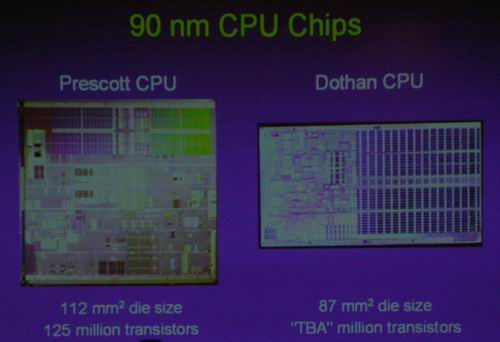DeadmeatGA
Banned
From Anandtech's IDF coverage

Of two new 90 nm Intel CPUs, of the particular interest to us is Dothan, which packs in more transistors(150 million??) than Prescott(125 million transistors) due to its 2MB L2 cache. What's even more incredible is that Dothan achieves 3X transistor density of SCEI's PSX2OAC, which weights in 55 million transistors on same die size.
Intel's fab technolgy is clearly superior to SCEI/Toshiba's, yet Intel is not talking about putting 4 Pentium4s in single die in next 65 nm generation....(Dual-core is a possibility). So why are you Sony fans expecting to see quad-CELLcores in your PSX3....

Of two new 90 nm Intel CPUs, of the particular interest to us is Dothan, which packs in more transistors(150 million??) than Prescott(125 million transistors) due to its 2MB L2 cache. What's even more incredible is that Dothan achieves 3X transistor density of SCEI's PSX2OAC, which weights in 55 million transistors on same die size.
Intel's fab technolgy is clearly superior to SCEI/Toshiba's, yet Intel is not talking about putting 4 Pentium4s in single die in next 65 nm generation....(Dual-core is a possibility). So why are you Sony fans expecting to see quad-CELLcores in your PSX3....
